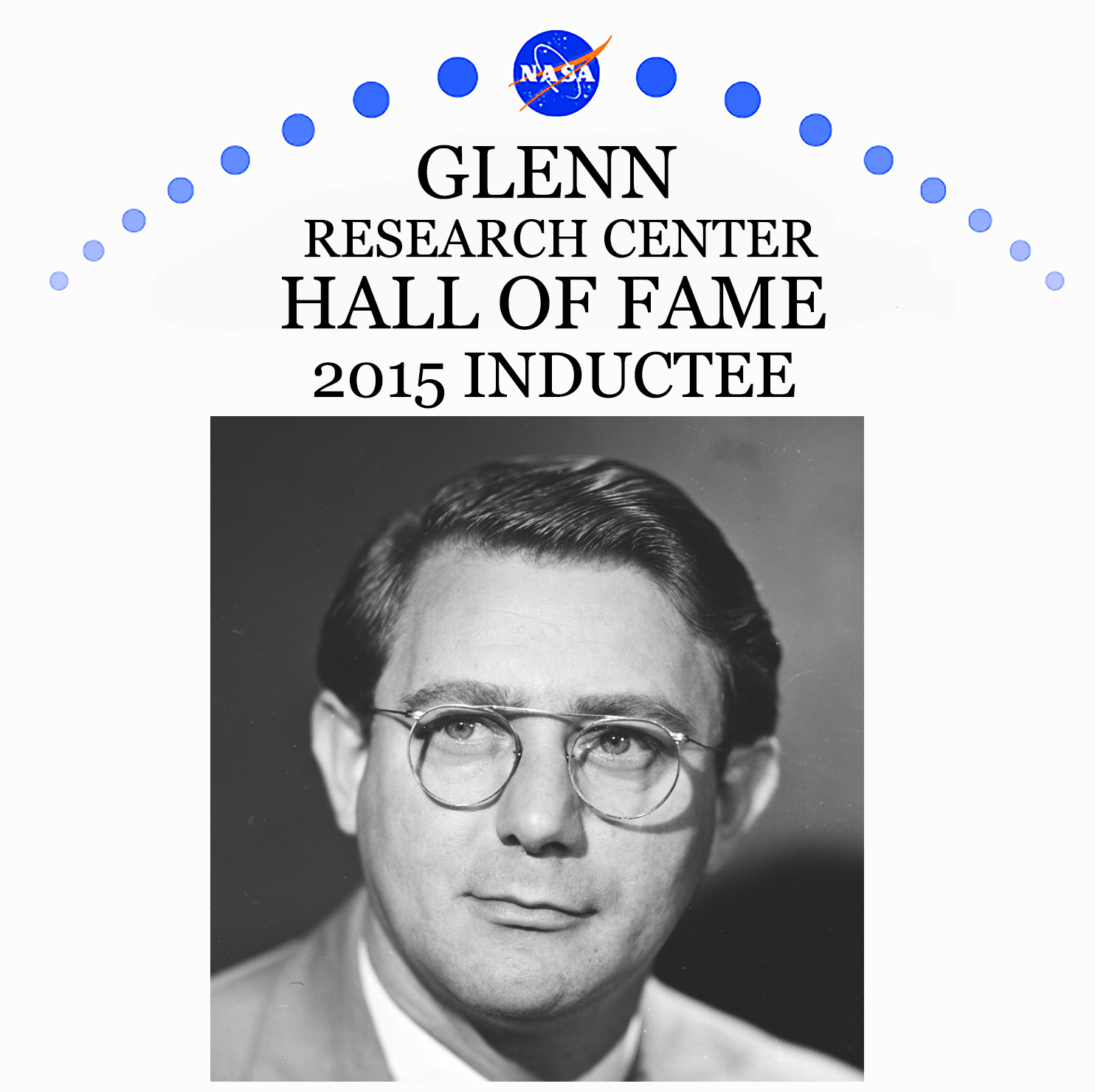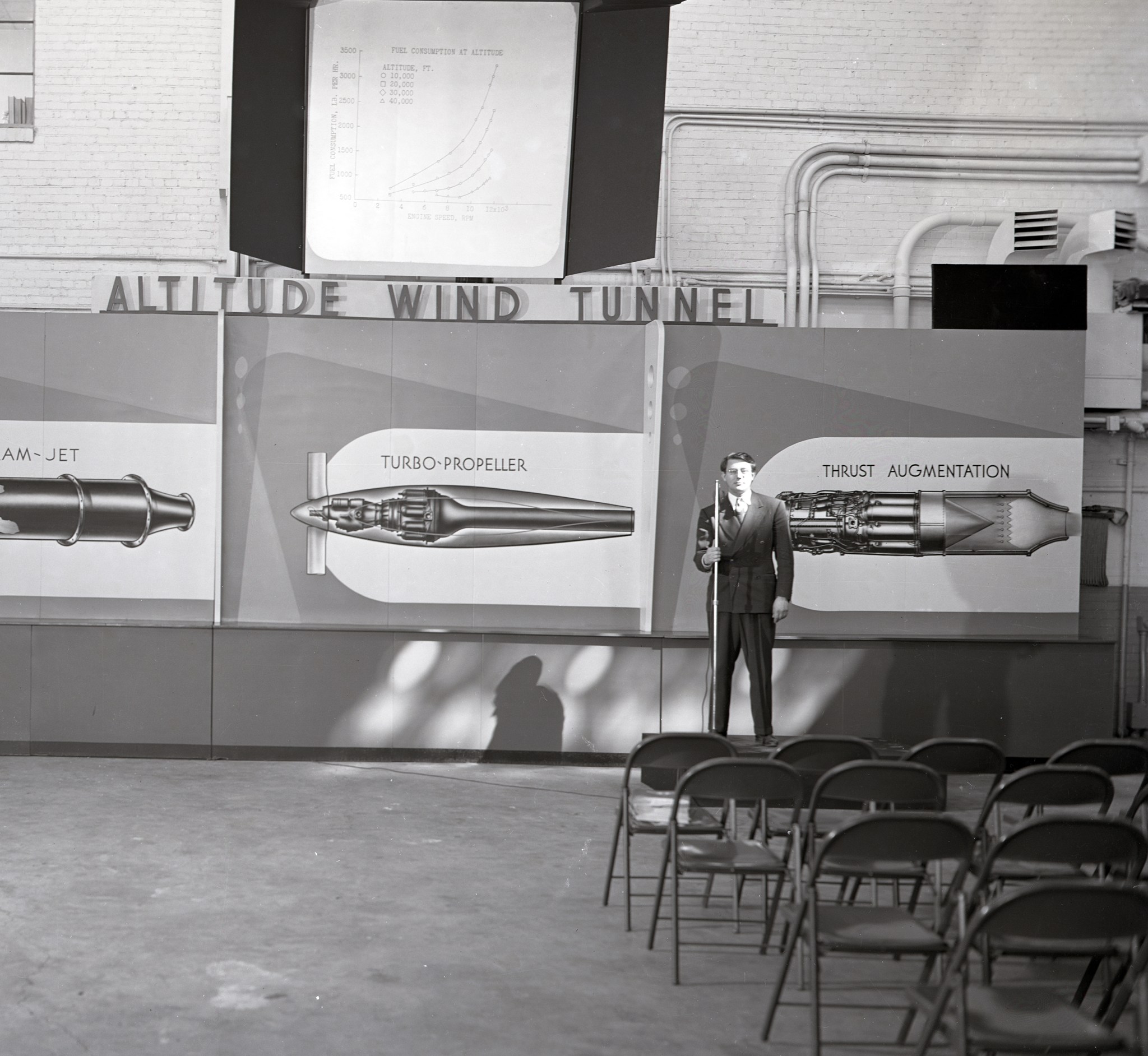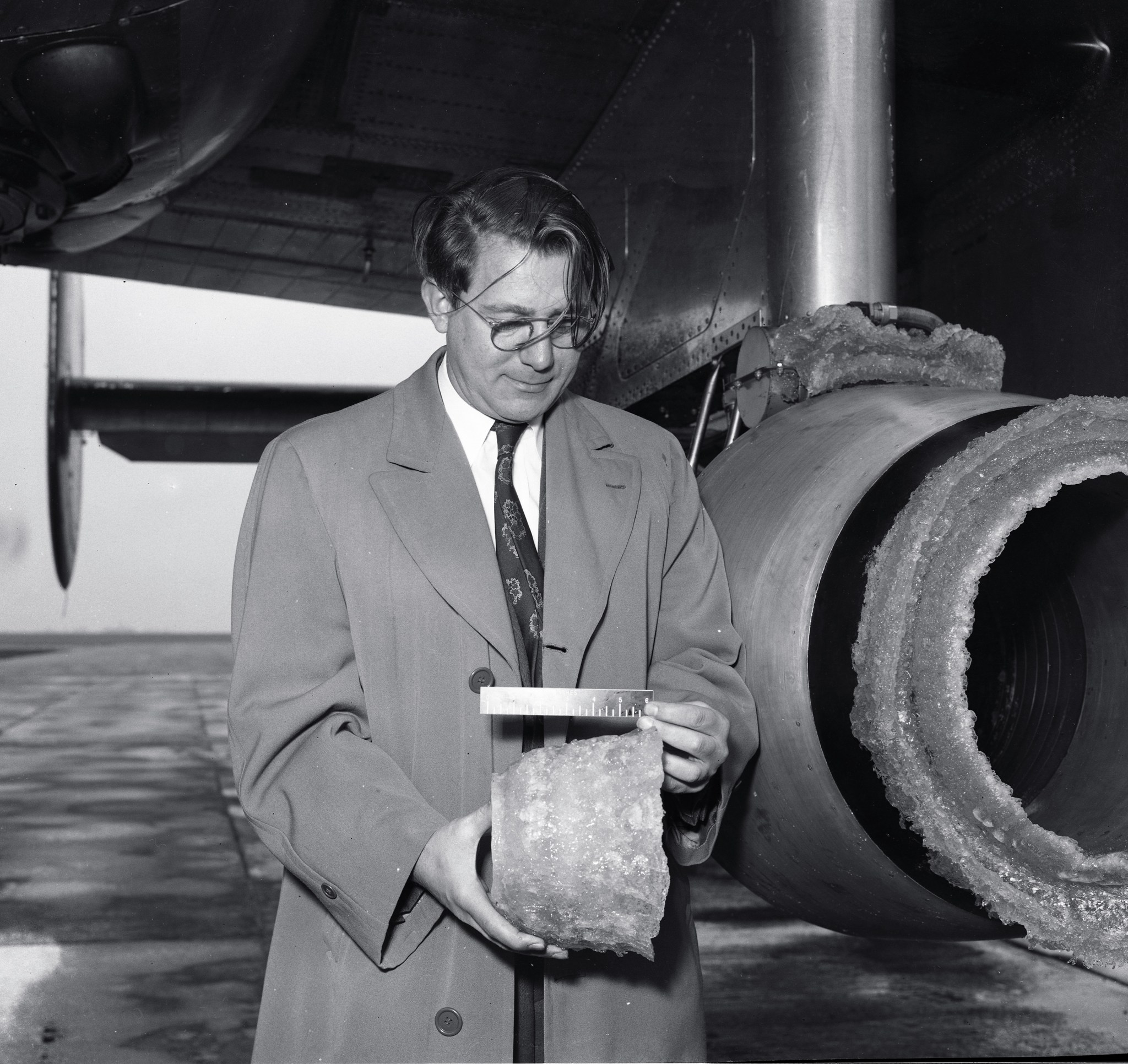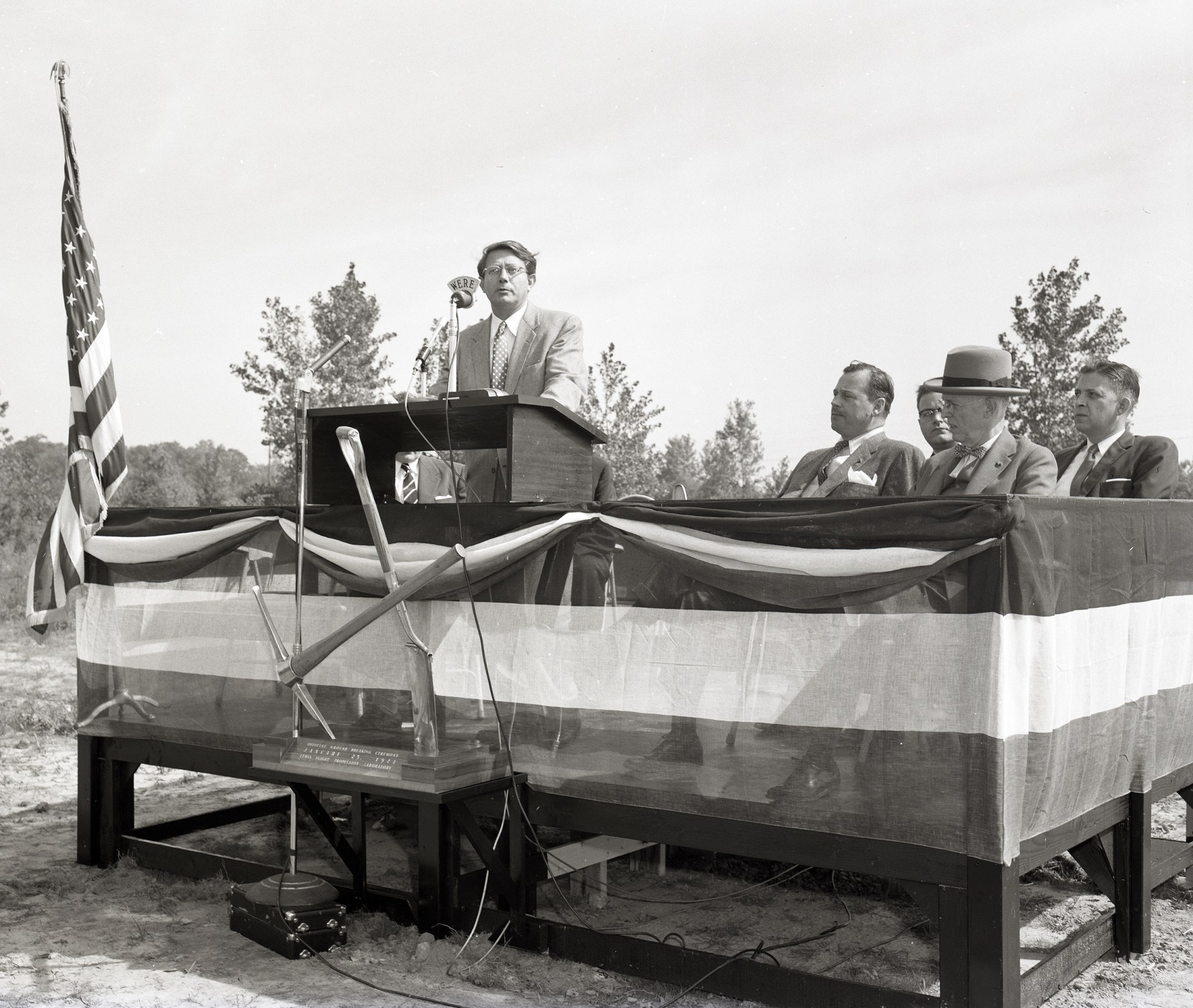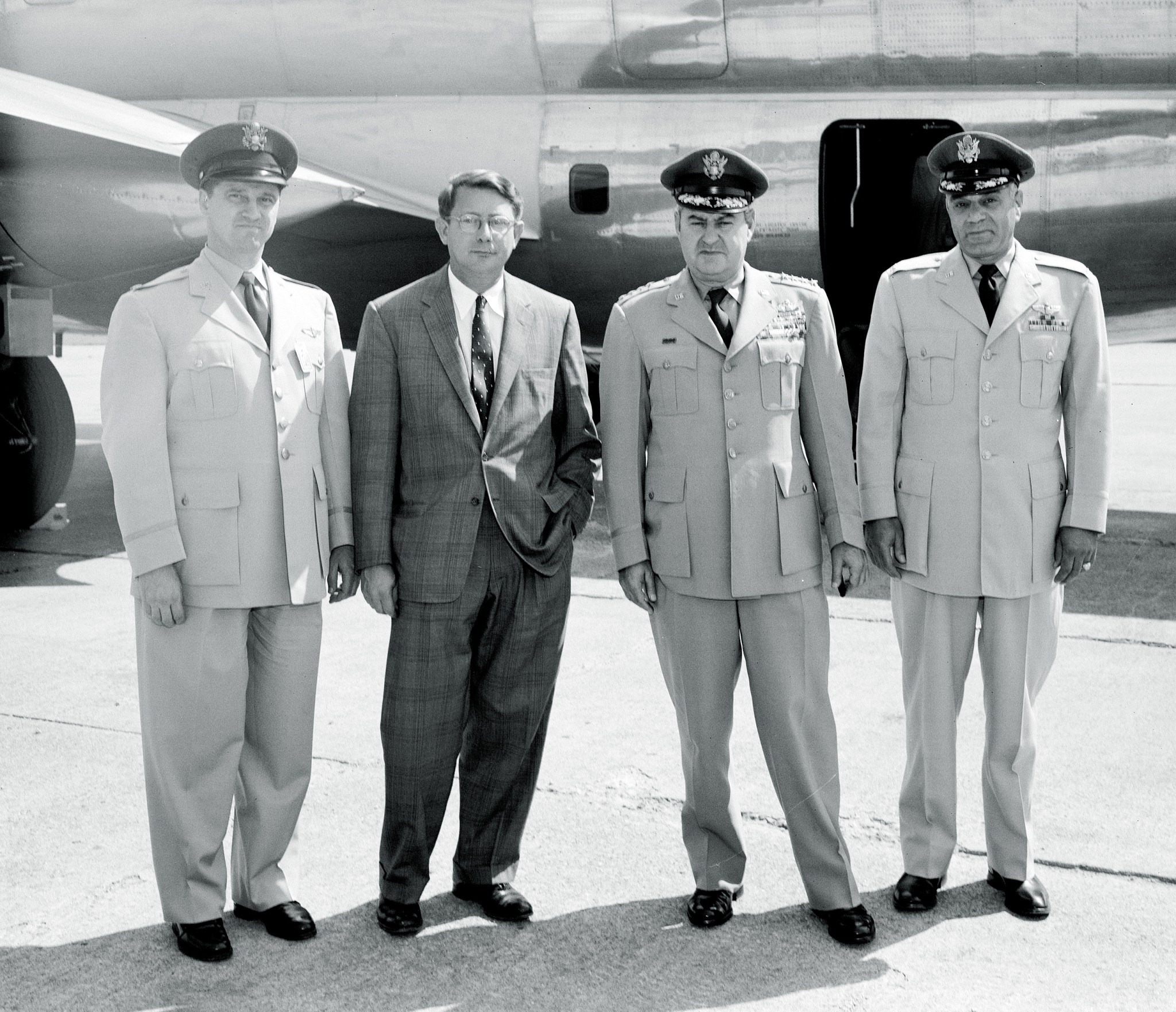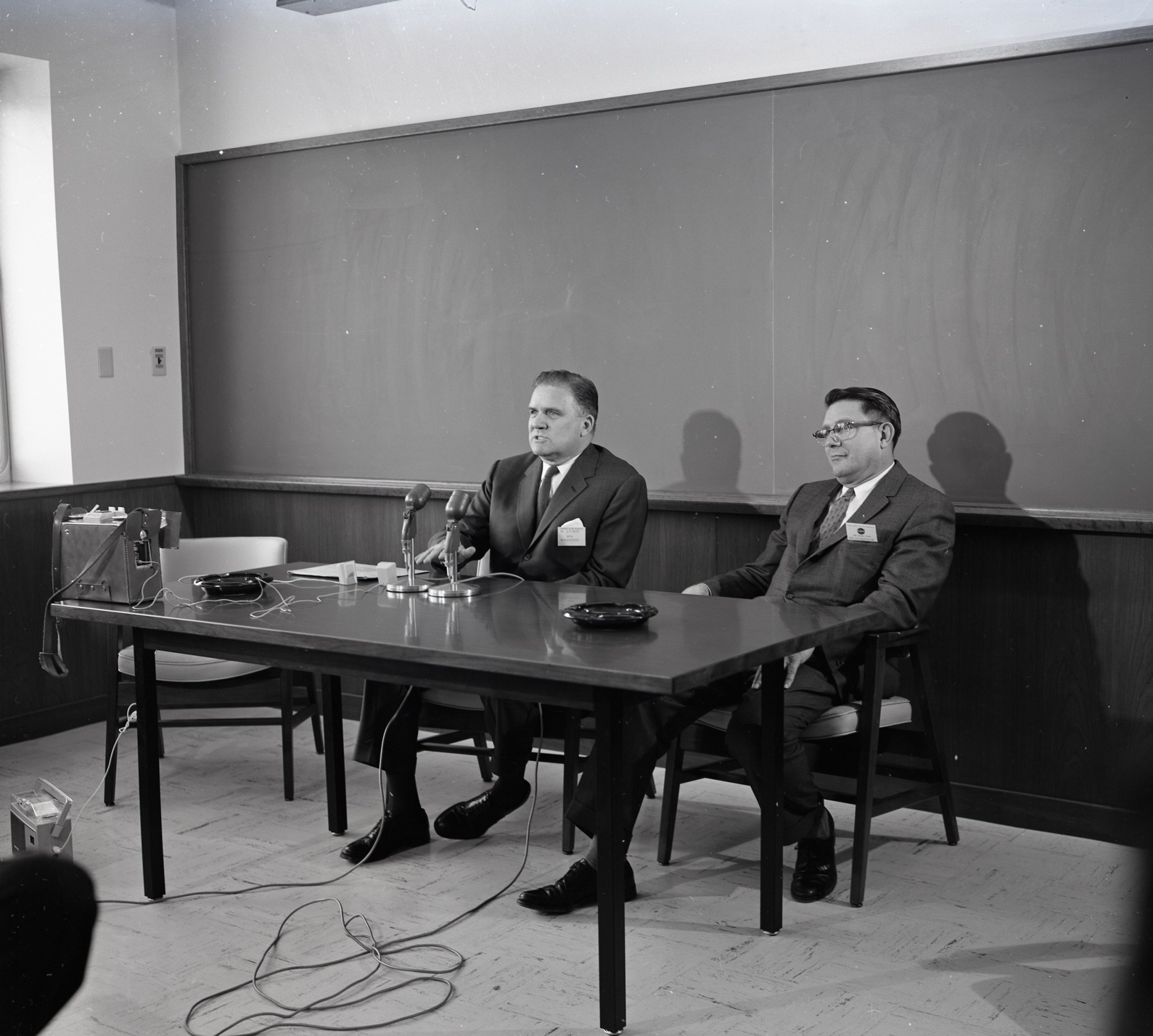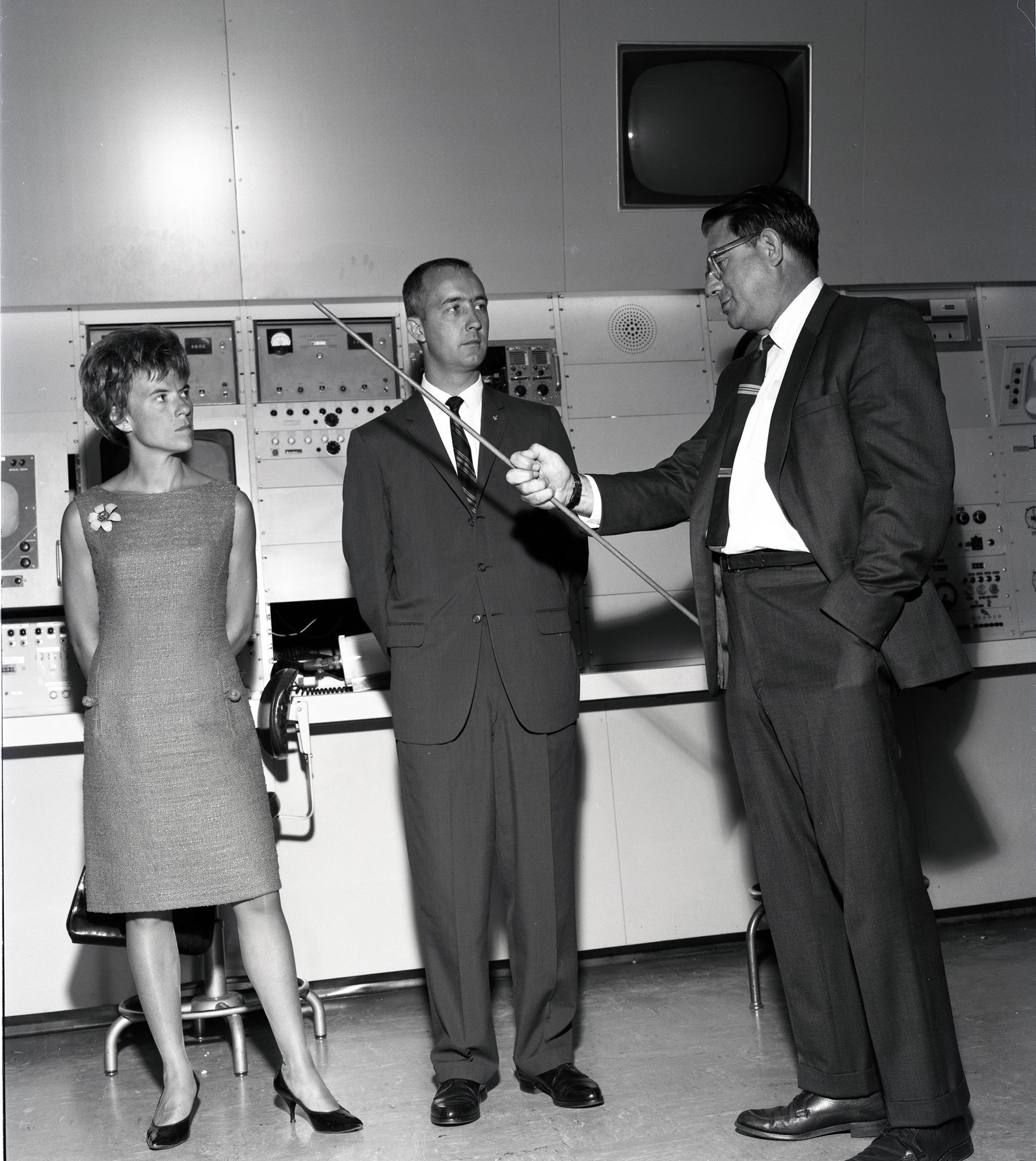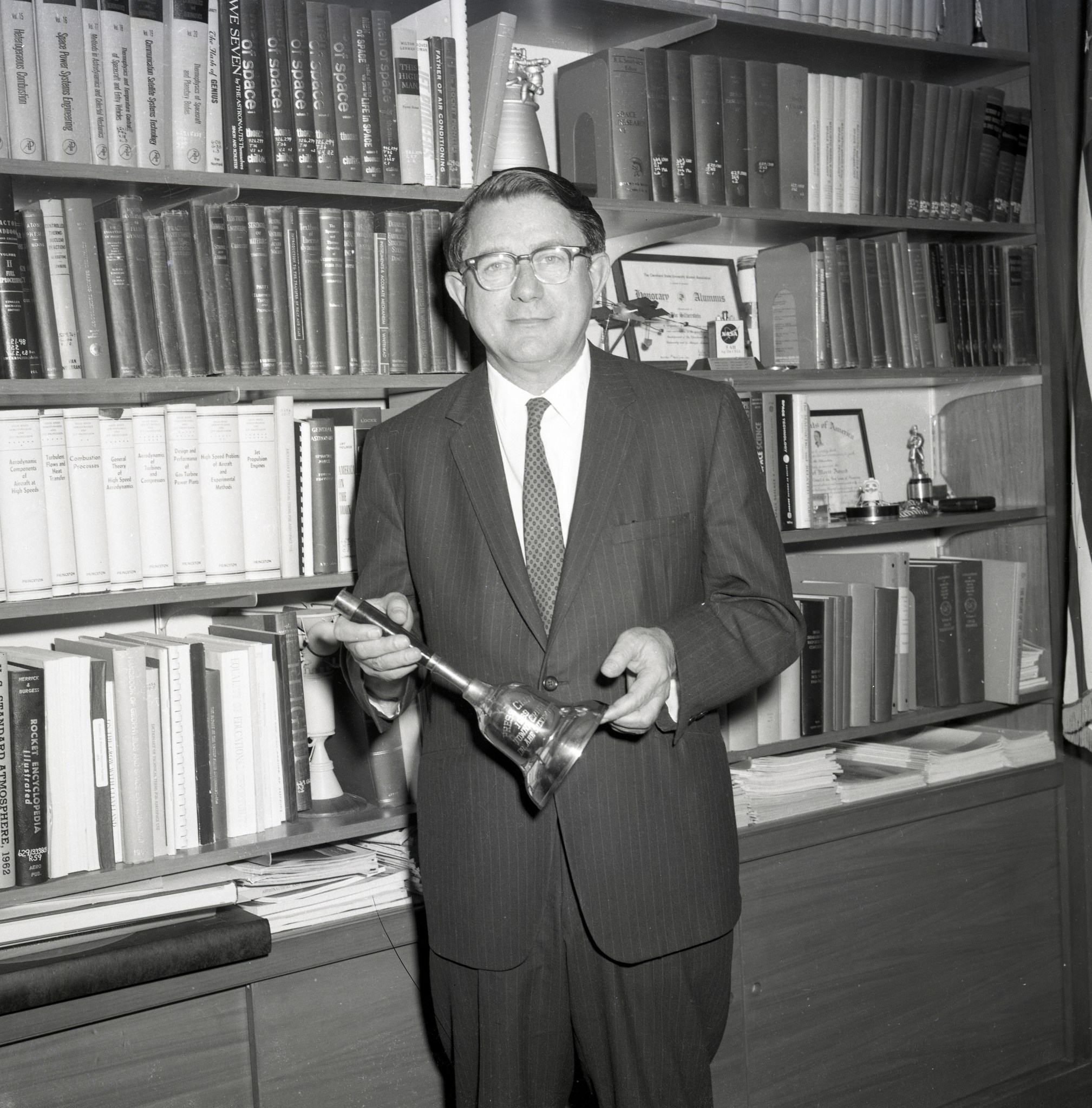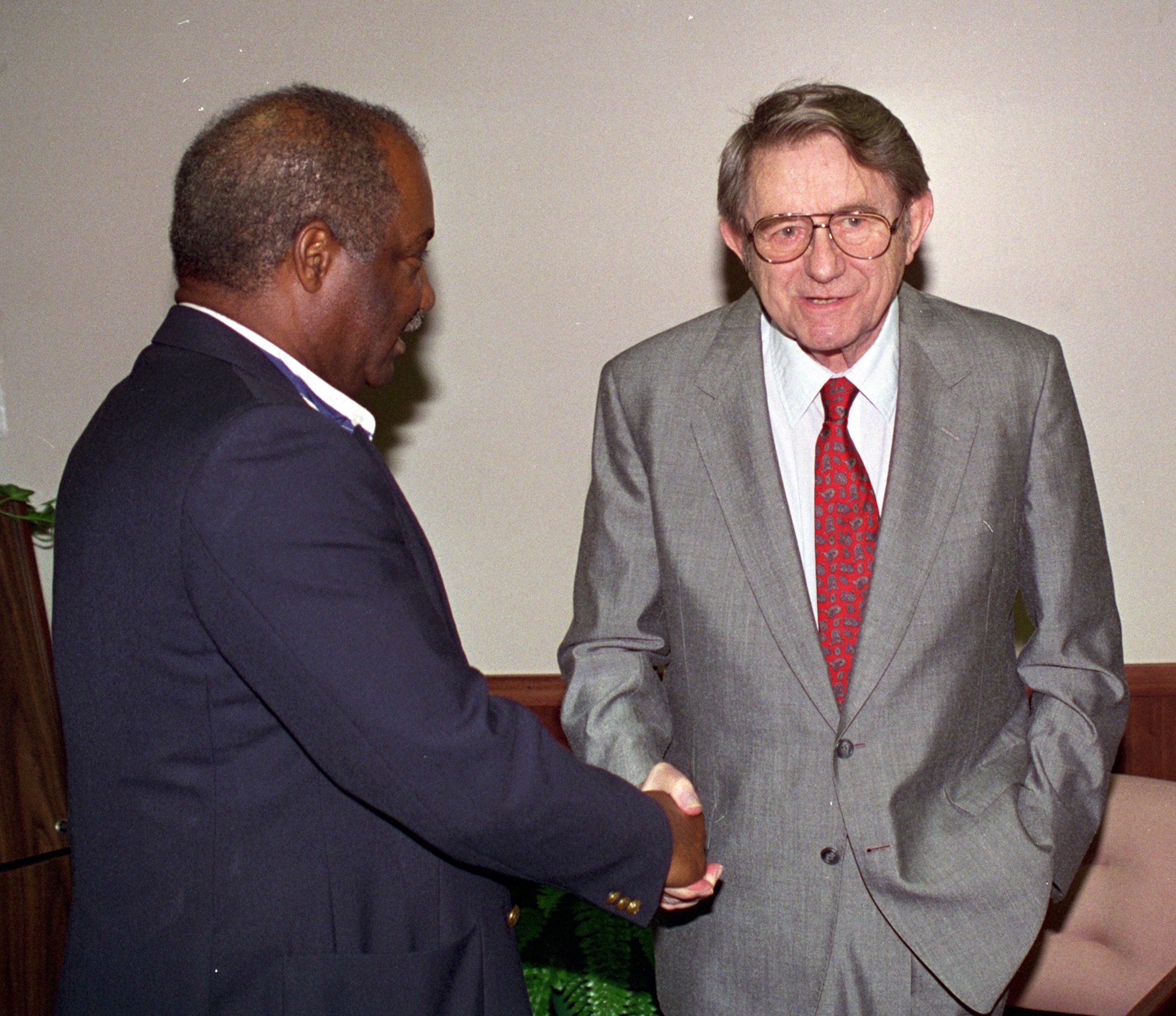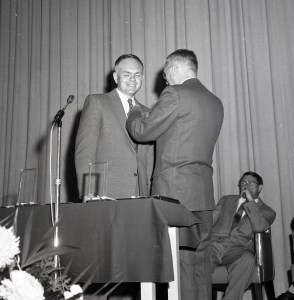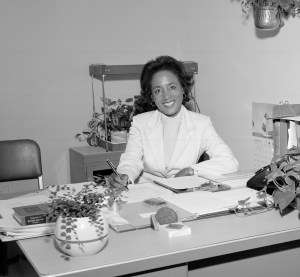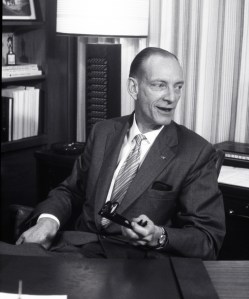Citation
Abe Silverstein began his career at the center in 1943, pioneering early jet technology. Dr. Silverstein was responsible for the conception, design, and construction of the nation’s earliest supersonic wind tunnels. His early support for the use of liquid hydrogen was key in the success of the Apollo Program. His advocacy for the center to lead the Centaur program put the center at the forefront of space travel and set the course for the exploration of the solar system. His influence on the agency can still be felt as one of the architects of NASA and early human space programs. When NASA was formed in 1958, he was appointed NASA Chief of Space Flight Programs and is credited with naming both the Mercury and Apollo programs. He would return from HQ to become the center director in 1961 until his retirement in 1969. In 1997 he was awarded the prestigious Guggenheim Medal for his contributions. Known for his legendary technical abilities, leadership, and vision, few have left a mark on the center as Abe Silverstein.
Biography
Abe Silverstein is perhaps the preeminent figure in the history of the NASA Glenn Research Center. Although Silverstein is best known for his efforts in establishing NASA in the late 1950s, he made significant technical and managerial contributions in an great array of fields—including the study of complete engine systems, the development of the Nation’s early jet engines, the creation of large supersonic wind tunnels, the use of liquid hydrogen as a propellant, the formation of the Mercury and Apollo Programs, and the success of the Centaur rocket.
Silverstein was born on September 15, 1908, in Terre Haute, Indiana. He graduated from the Rose Polytechnic Institute in 1929 with a bachelor’s of science degree in mechanical engineering and returned to earn a degree as a Mechanical Engineering Professional in 1934. After graduation, the National Advisory Committee on Aviation (NACA) offered Silverstein an engineering position at the Langley Memorial Aeronautical Laboratory. There, he helped Smith DeFrance design a massive new test facility, the Full Scale Tunnel (FST). Silverstein designed the tunnel’s supporting framework so that it would be on the exterior of the tunnel, where it would not cause turbulence in the airstream. Silverstein remained at the FST as a researcher after it began operating in May 1931. Although primarily involved in Langley’s typical aerodynamics work, Silverstein also conducted engine cooling investigations that portended his future work at Lewis. He assumed DeFrance’s role as chief of the FST when DeFrance departed in 1940. In this role, Silverstein led Langley’s World War II effort to use the tunnel to minimize the drag on U.S. military aircraft.
The NACA expanded during the war and created the new Aircraft Engine Research Laboratory (which would later become NASA Glenn) in Cleveland. Silverstein was transferred to Cleveland in 1943 to run the Altitude Wind Tunnel: the new laboratory’s premier facility. The military soon made arrangements with Silverstein for the first U.S. jet aircraft—the Bell YP–59A Airacomet—to be the first test in the new tunnel. At that point only a few people in the NACA were aware that the United States had a jet engine. Although the aircraft’s General Electric I–16 engines were too problematic to be used in the war, the jet engine would transform the aviation industry and research at the Lab. Silverstein and his colleagues then resolved a critical engine cooling issue on the Wright R–3350 engines that powered the new B–29 Superfortress, and Silverstein’s insertion of baffles into the engine was a key element of the resolution. Silverstein and his staff concentrated on other early turbojet engines throughout the remainder of the war. In 1945 he also contributed to the first successful operation of an afterburner.
In October 1945, Silverstein was promoted to chief of the Lab’s new Wind Tunnels and Flight Division. Among the first at the laboratory to grasp the importance of the jet engine and high-speed flight, he initiated a series of evening classes so that the staff could educate one another on these topics. The NACA appointed him to its High Speed Research Panel along with John Stack, Russell Robinson, and Julian Allen. During this period, Silverstein began planning several quickly constructed small supersonic wind tunnels and what would then be the NACA’s largest supersonic tunnel, the 8- by 6-Foot Supersonic Wind Tunnel. Silverstein then urged the creation of what is still today the Nation’s largest propulsion tunnel, the 10- by 10-Foot Supersonic Wind Tunnel.
In 1949, Silverstein was named chief of research for the entire Lab. His role was expanded, and the position was renamed associate director in 1952. Silverstein had always been an influential force at the Lab, but now he was able to expand the research into unprecedented areas, such as high-energy propellants and nuclear and electric propulsion. In the mid-1950s he disbanded the Laboratory’s largest division, Compressors and Turbines, and created two new divisions—the Nuclear Reactor Division and the Fluids Systems Components Division—to study nuclear propulsion and cryogenic fuels, respectively. He had successfully convinced the NACA to build the Plum Brook Reactor Facility on a large remote tract of land to investigate the effect of radiation on nuclear aircraft and rocket engine components.
The importance of Silverstein’s advocacy for the use of liquid hydrogen as a propellant cannot be overstated. Early rocketeers had theorized about using liquid hydrogen, but the technology did not exist to make it happen. The military briefly considered it after World War II but quickly gave up on the idea. It was at this point in the early 1950s that Lewis researchers were analyzing a variety of high-energy propellants, including hydrogen. Some successful tests in 1954 convinced Silverstein to pursue hydrogen over the other alternatives. He and Eldon Hall authored a report which foretold of liquid-hydrogen missions that far surpassed those using traditional hydrocarbon fuels. On the basis of these findings, the Air Force asked Silverstein to develop an actual flight version of the system. After extensive ground testing, the system was integrated into a B–57 Canberra. During the winter and spring of 1957, the B–57 successfully flew several flights with liquid hydrogen as the fuel. Although the hydrogen-fueled aircraft was never developed, in the coming years Silverstein would push for the use of liquid hydrogen in the space program.
In the mid-1950s there was increasing talk in research circles about entering space. Although NACA management considered space outside of the mandate, Silverstein and several Lewis colleagues viewed it as a natural progression of their aeronautics work. Lewis drafted documents outlining the requirements for a new laboratory dedicated exclusively to space flight and the role of the NACA in space research. It was not until the launch of Sputnik in the fall of 1957 that Headquarters reversed their policy. NACA Director Hugh Dryden requested Silverstein’s assistance in creating the new space agency. After several months of commuting, Silverstein officially transferred to Headquarters in May 1958.
At Headquarters, Silverstein worked with Robert Gilruth, Morton Stoller, Edgar Cortright, and Newell Sanders to create an operating budget and plan future satellite, space probe, and human missions into space. The group devised a fiscal year 1960 budget by mid-July and began planning missions that included both satellites and manned spacecraft. When NASA began operation on October 1, 1958, T. Keith Glennan was its Administrator, Hugh Dryden was its Deputy Administrator, and Silverstein was its Chief of Space Flight Programs—third in command.
Silverstein’s accomplishments in Washington, DC, are well documented: planning a variety of space missions, creating the NASA Goddard Space Flight Center, chairing the Mercury capsule source selection board, naming the Mercury and Apollo programs, and coauthoring a paper for Lyndon Johnson in May 1961 that summarized the logistics of landing humans on the Moon. Despite these endeavors, Silverstein’s most enduring feat was his push to use liquid hydrogen.
In 1958 he led a review team which noted that high-energy fuels would be required to carry out the missions that NASA was planning. In late 1959 NASA created the Saturn Vehicle Team, known as the “Silverstein Committee,” to select upper stages for the Saturn rocket. Silverstein persuaded Werner von Braun to only consider stages that could use liquid hydrogen. There had been no hydrogen rockets to date, so von Braun was wary, but he ultimately conceded to Silverstein’s point that the agency should be planning for the future.
When new Administrator James Webb reorganized the management of the space program in 1961, Silverstein did not agree with the new structure and asked to return to Lewis to fill the vacant center director post. Upon his arrival in November 1961, Silverstein assumed the traditional director roles, but he also had to deal with NASA’s unprecedented hiring rate, the design of a host of new space test facilities, and management of several new development programs, including the Centaur rocket.
Centaur was a liquid-hydrogen-fueled upper-stage rocket that NASA was relying on to send Surveyor spacecraft to explore the lunar surface during the early stages of the Apollo Program. The NASA Marshall Space Flight Center managed Centaur initially, but the program was transferred to Lewis in October 1962 after the failure of the first launch. Silverstein became the unofficial head of the Centaur program and was deeply involved with day-to-day operations. Lewis had remedied most of the problems and successfully launched the Centaur in November 1963. Centaur went on to not only complete the Surveyor missions but launch scores of satellites and send probes to planets all over the solar system.
Silverstein believed in selecting the best people for the most important projects, even if they were not involved in that field; staying ahead of the research curve; and testing full-scale systems in conditions that simulated those in which they would operate. He could instantly grasp the essence of a problem, propose a likely solution, and delegate the task to the experts to resolve. This off-the-cuff acumen and decisiveness inspired both fear and intense loyalty from staff and colleagues. Silverstein did not hesitate to call meetings in the evenings or on weekends, but he knew nearly every employee by name and took a genuine interest in the work that they were performing. Though employees were sometimes irritated or fearful of Silverstein’s comments, it appears that almost everyone respected his judgment and looked to him for technical direction.
Silverstein contributed to at least 50 technical reports during his career and presented papers at many significant conferences in the United States and abroad. He also received several honorary degrees, NASA’s Outstanding Leadership and Exceptional Service medals, and the Guggenheim Medal. Silverstein retired in the summer of 1969 just as the Apollo program was reaching its apex. After 40 years with the NACA and NASA, he sought new challenges and spent many years advocating for a new jetport to be built in downtown Cleveland. In 1994, the center instituted the Abe Silverstein Award to annually honor an employee performing outstanding research with practical applications; and renamed its 10- by 10-foot tunnel to honor Silverstein: the Abe Silverstein 10- by 10-Foot Supersonic Wind Tunnel. Silverstein died on June 1, 2001, at the age of 92.
Related Documents
- National Academy of Engineering Memorial Tribute (2013)
- Silverstein Center Director Biography
- Silverstein Biographical Sketches (1959-1973)
- Low Memo on Apollo Working Group (1960)
- Early Architect of Apollo Landing Dies (2001)
























